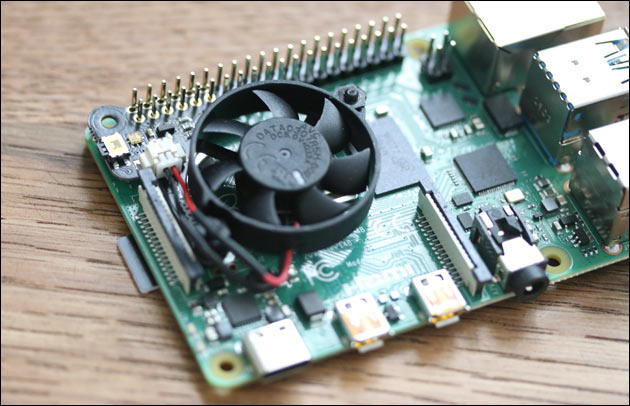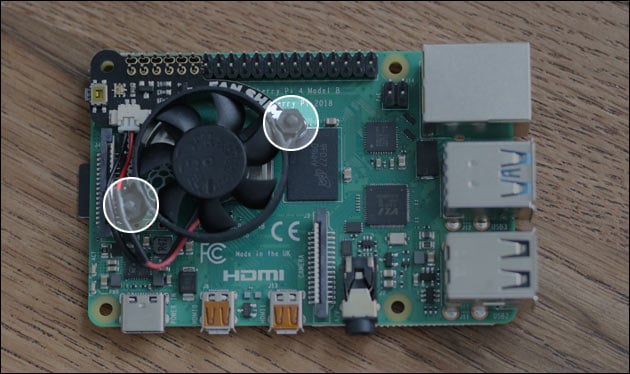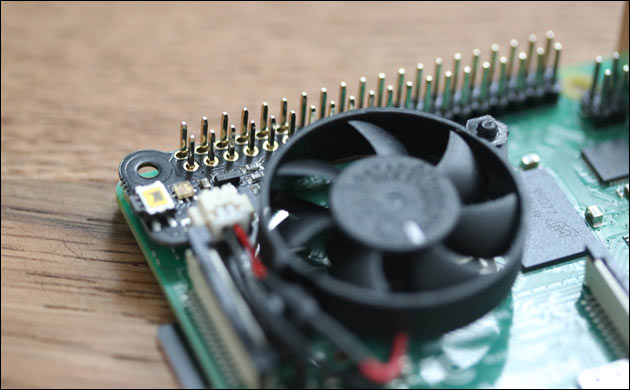Keep your Raspberry Pi cool: How to install the Pi Fan Shim!
08/15/2019 (2987x read)

The online retailer Pimoroni offers a small and suitable active cooler for the Raspberry Pi 4: the Pi Fan Shim. It is assembled very quickly and plugged onto the GPIO ports of the Raspberry: You can still use the GPIO ports with the fan attached! The front GPIO ports have remained the same since the first Rasbperry Pi, so the fan also fits on the Raspberry Pi 3 or 2.
The small fan is especially useful on the Pi 4: it can reduce the temperature of the chips by about 20°C. The fan can also be mounted on the Raspberry Pi 3 or 2, but it’s not necessary to screw it on. This is good for the lifetime of the chips and helps the speed: If the Pi gets too hot, it automatically clocks down.
Although the pi is on the first six ports of the left and right row, it doesn’t block them: cables or other attachments can still be plugged in here. However, the fan is very close to the processor, so it is not possible to use an additional passive cooler.
How to attach Pi Fan Shim
The assembly of the Fan Shim is very simple: It consists of the small fan and the holder, which is plugged onto the GPIO pins and also two M2.5 screws with four nuts.

When assembling, insert the two screws with the head down through the bracket from below. They have to be screwed directly with the first two nuts, so that the fan is stable afterwards. Now put on the fan with the writing upwards and screw it with the remaining two nuts from above. Afterwards, the small plug must must be plugged into the circuit board: The red cable must point to the fan.

Before you put the Pi Fan Shim on the Raspberry, you have to turn it off: Send the command „sudo halt“ via the console or SSH and wait until the Pi is shut down: Now you can disconnect the power supply: This is important so that you don’t cause a short circuit when plugging on the fan board!
The board must be plugged into the first GPIO ports as shown in the photo. It is very thin, which is practical: So you can use the ports for other applications. After switching on the Raspberry, the fan already turns on: If you want it to run permanently, you don’t have to do anything now.
Measure your Pi’s temperature
You can use this command in the Pi’s console to measure the Raspberry’s temperature:
vcgencmd measure_temp
This will tell you how warm the Pi’s CPU is right now. This is how it looks on a Pi 2 and 3 with a passive cooler:


